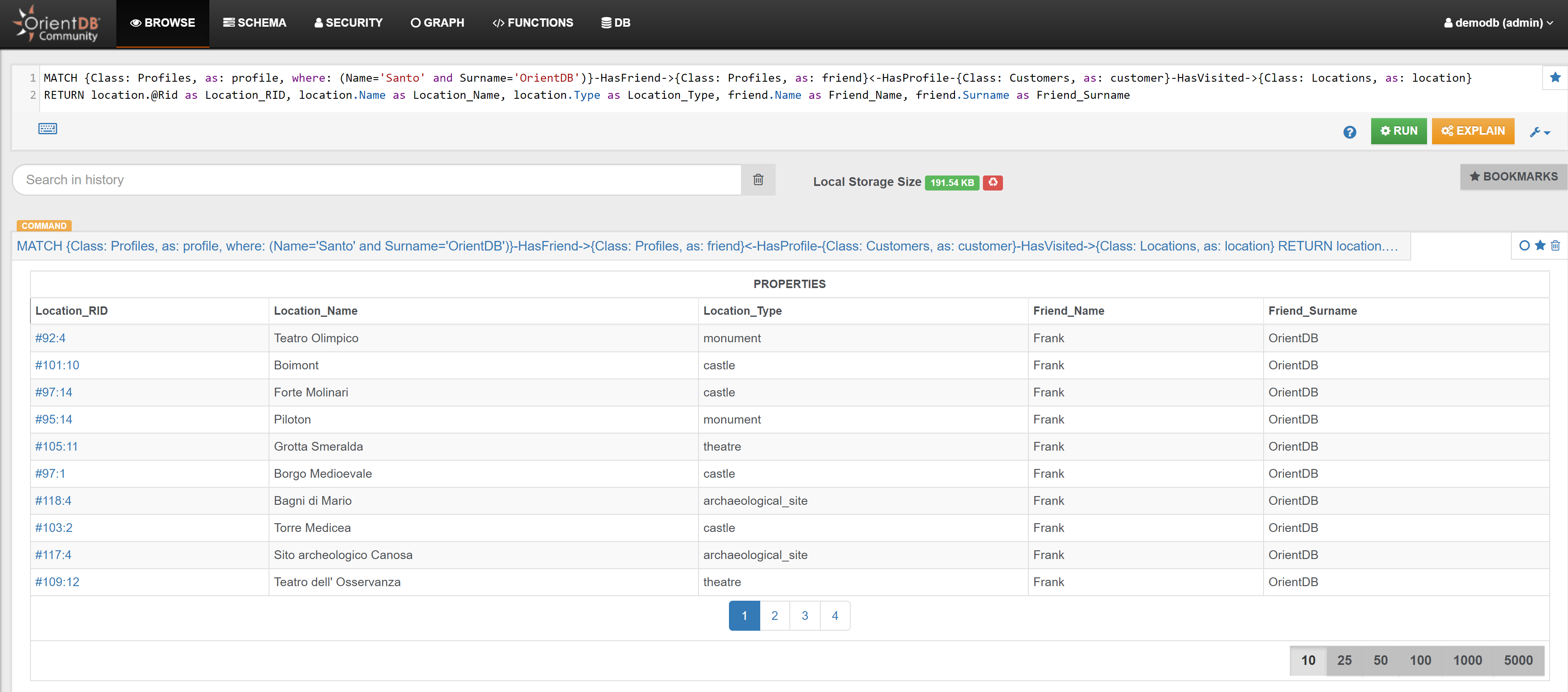Locations
Example 1
Find all Locations visited by Santo:
MATCH {Class: Profiles, as: profile, where: (Name='Santo' AND Surname='OrientDB')}<-HasProfile-{Class: Customers, as: customer}-HasVisited->{class: Locations, as: location}
RETURN $pathelements
In the Graph Editor included in Studio, using the query above, this is the obtained graph:
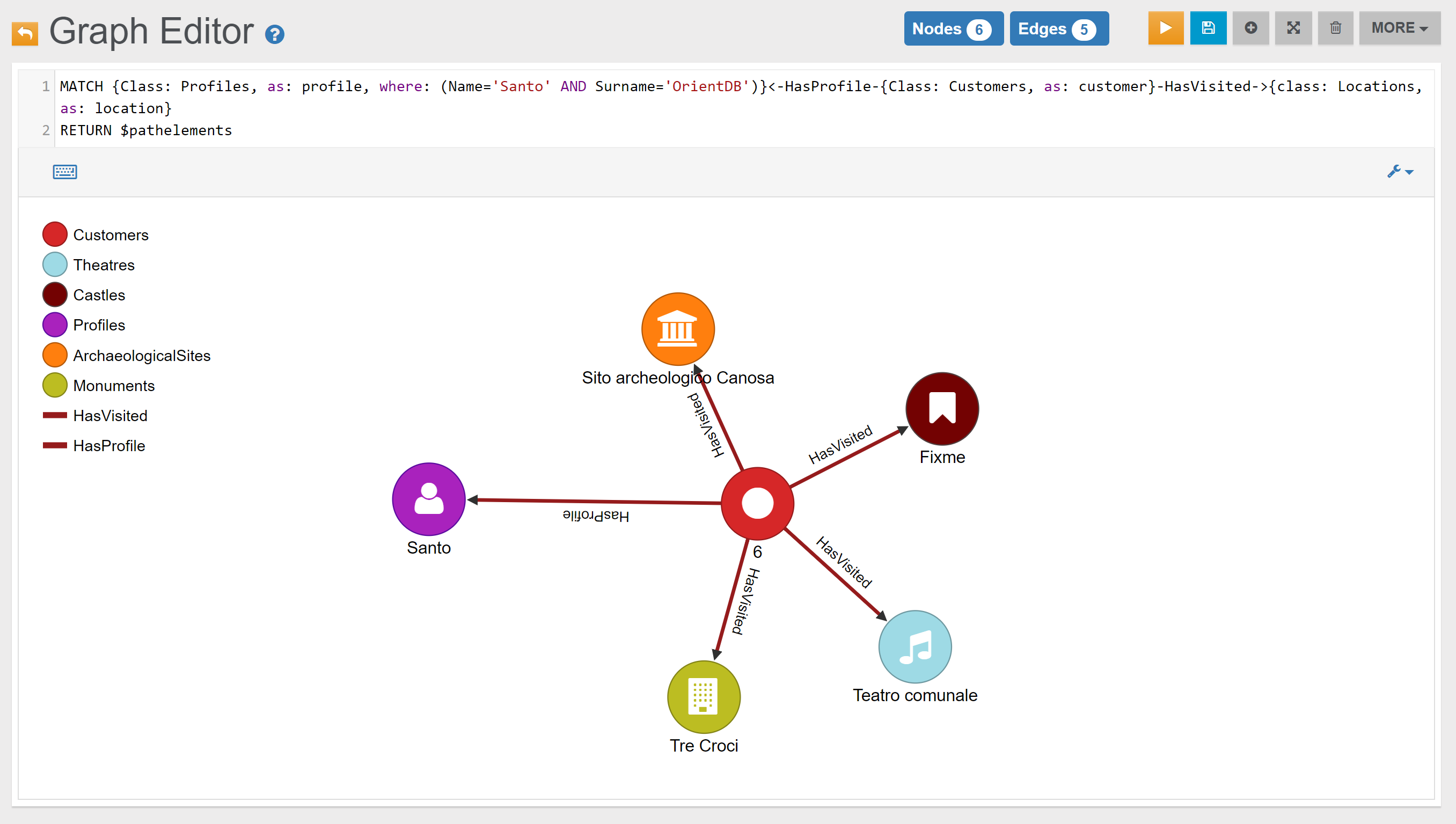
Example 2
{% include "./include-file-7.md" %}
Example 3
{% include "./include-file-8.md" %}
Example 4
Find all Locations visited by Customer with OrderedId 2:
MATCH {Class: Locations, as: location}<-HasVisited-{class: Customers, as: customer, where: (OrderedId=2)}
RETURN $pathelements
In the Graph Editor included in Studio, using 'RETURN $pathelements' as RETURN clause, this is the obtained graph:
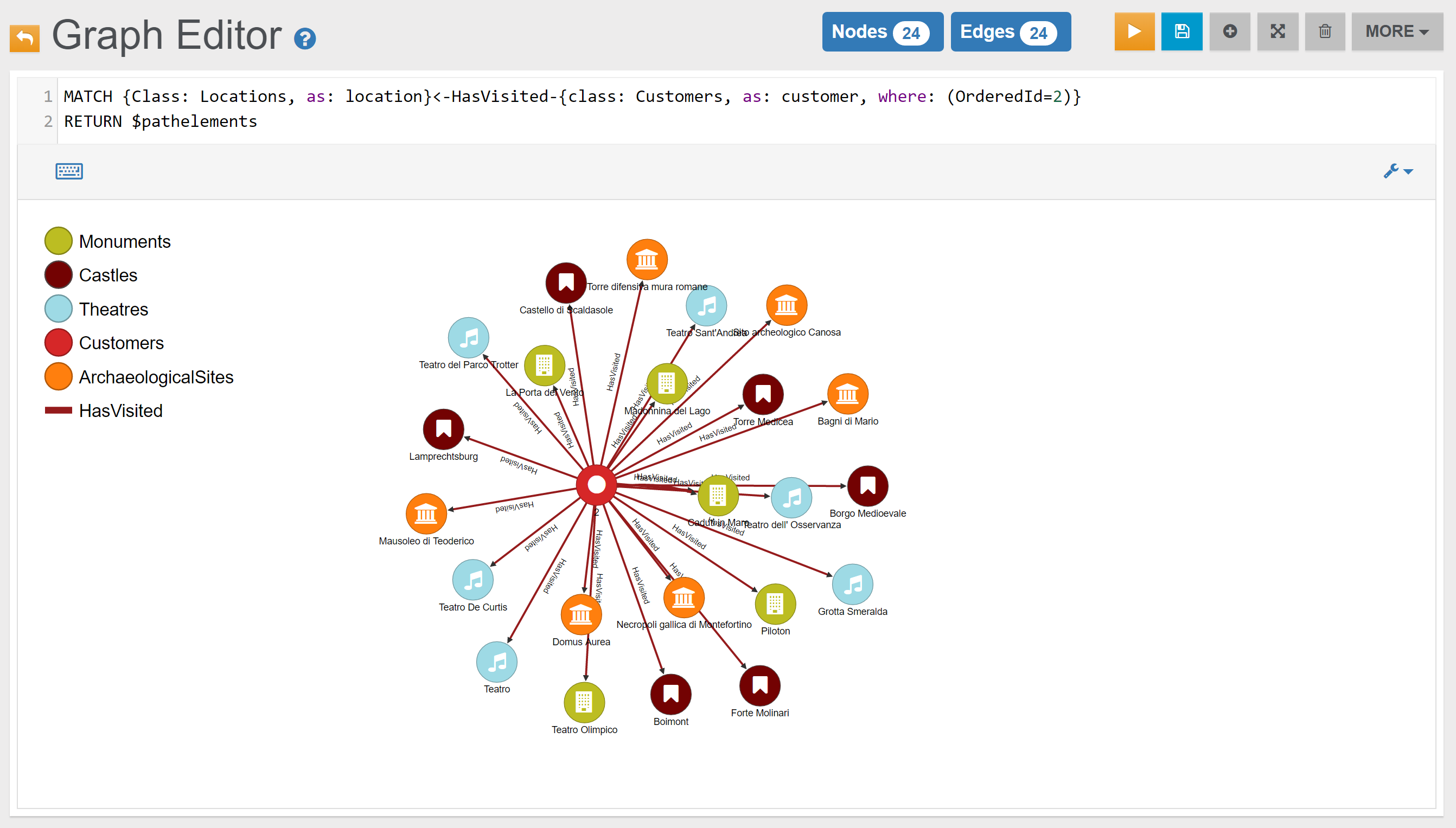
In the Browse Tab of Studio, using 'RETURN location.@Rid as Location_RID, location.Name as Location_Name, location.Type as Location_Type' as RETURN clause, this is the obtained list of records (only few records are shown in the image below):
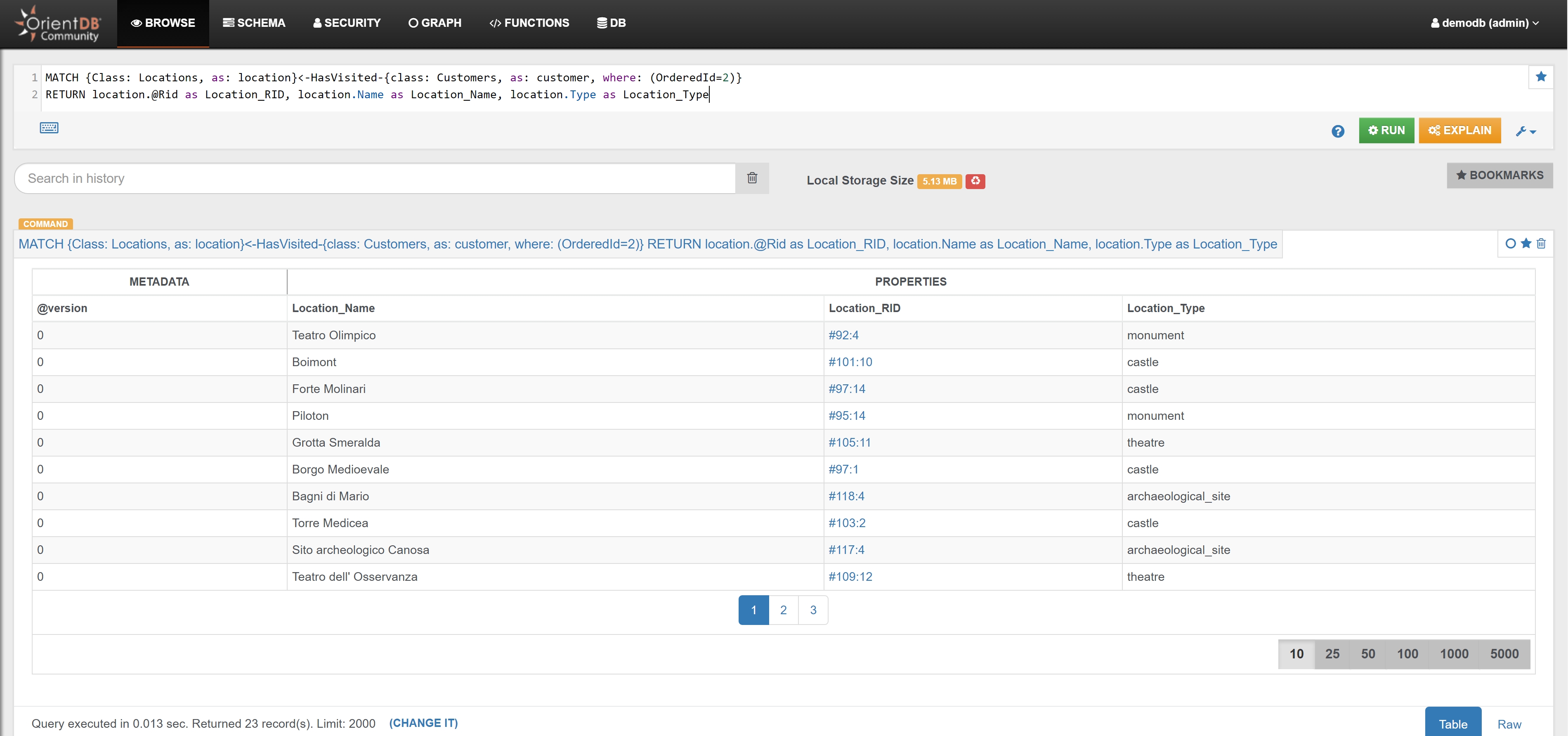
Example 5
Find all Locations visited by Santo's friends:
MATCH {Class: Profiles, as: profile, where: (Name='Santo' and Surname='OrientDB')}-HasFriend->{Class: Profiles, as: friend}<-HasProfile-{Class: Customers, as: customer}-HasVisited->{Class: Locations, as: location}
RETURN $pathelements
In the Graph Editor included in Studio, using 'RETURN $pathelements' as RETURN clause, this is the obtained graph:
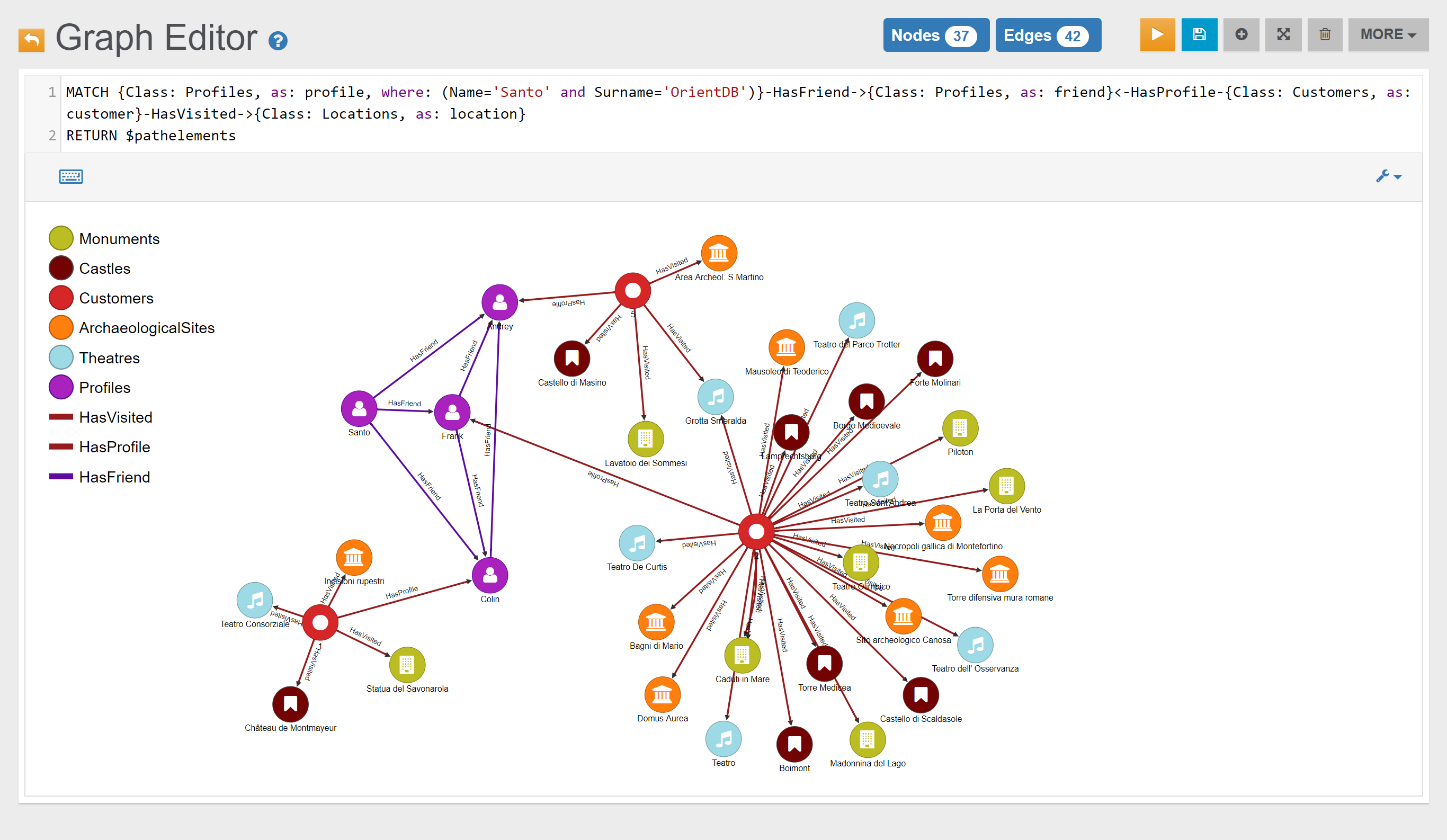
In the Browse Tab of Studio, using 'location.@Rid as Location_RID, location.Name as Location_Name, location.Type as Location_Type, friend.Name as Friend_Name, friend.Surname as Friend_Surname' as RETURN clause, this is the obtained list of records (only few records are shown in the image below):
